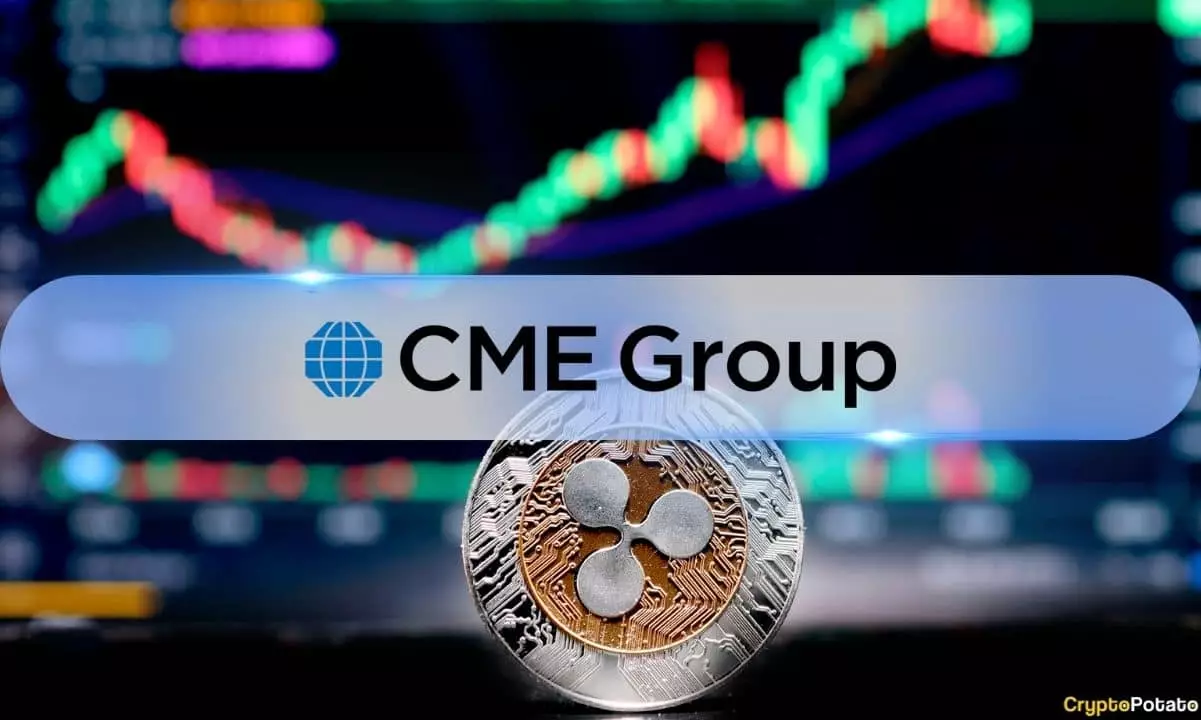On May 19, the Chicago Mercantile Exchange (CME) is set to introduce XRP futures contracts, marking a significant milestone in the realm of institutional crypto derivatives. This move does more than just expand CME’s already burgeoning crypto offerings, which include Bitcoin, Ethereum, and Solana futures; it signals a deeper, more strategic embrace of the crypto market, steering a path toward legitimacy and maturity. While some may argue that futures contracts merely reflect a speculative nature, they also signify a crucial turning point for cryptocurrencies as they garner institutional interest and pave the way for more sophisticated investment strategies. It’s worth scrutinizing what this means for both Ripple’s ecosystem and the broader financial landscape.
The Battle for Clarity amid Legal Turmoil
However, this ambitious launch is shadowed by ongoing legal battles that highlight a persistent uncertainty in the regulatory landscape surrounding cryptocurrencies. The recent denial by Judge Analisa Torres regarding a joint motion between Ripple and the Securities and Exchange Commission (SEC) for a settlement underscore the fraught relationship between traditional regulatory frameworks and the exuberant innovation in the crypto space. While the judge’s previous ruling suggested that programmatic sales of XRP did not qualify as security offerings, the denial of the motion illustrates that hurdles remain. Such legal deterrents could easily dampen the anticipated enthusiasm surrounding the futures contracts.
Despite the efforts by Ripple to achieve clarity, the regulatory quagmire could deter institutional participation, inflicting an ineffable chill on investor sentiment. The volatility inherent in custody, transaction, and compliance obligations raises critical questions: Are we witnessing a genuine evolution in crypto or merely a speculative echo of traditional asset trading? The launch of XRP futures might provide the necessary framework for institutional entrants, yet the legal instability signifies lurking risks.
Futures Contracts Tailored for Every Investor
The design of CME’s XRP futures contracts stands out for catering to both large institutional investors and smaller retail traders. By introducing a standard contract that represents 50,000 XRP alongside a Micro XRP futures contract covering 2,500 tokens, the CME is recognizing the diverse trading strategies and risk appetites in the market. This inclusion allows smaller players to participate without having to stake substantial capital upfront, thereby democratising access to XRP’s trading potential.
Pricing structures are also noteworthy, as they present a compelling opportunity for traders to engage with lower transaction costs. Individuals trading as members incur fees that are significantly lower than those for non-members: just $4 for standard contracts and $0.75 for micro contracts. This tiered fee structure allows for a more approachable entry point, especially for those wary of the capital-intensive nature of crypto investing.
Contradictory Signals in XRP’s Market Performance
Interestingly, despite a bullish outlook for XRP futures and the associated institutional adoption, the performance of XRP itself tells a different story. As of the latest reports, the token has shown muted movement—dipping 1.3% over 24 hours and 2.6% over the past week. Such lethargy in price action raises eyebrows, especially considering the optimism spurred by futures trading. Nonetheless, XRP has managed a remarkable 12.1% gain over the past month, suggesting that market participants may be positioning themselves ahead of the futures rollout.
Yet, it begs the question: Are investors merely acclimatizing to potential future volatility, or is there an underlying hesitation to fully commit given the turbulent legal and regulatory backdrop? If XRP is to harness the potential advantages that futures contracts present, it’s imperative that the asset itself inspires confidence, and that seems to waver amidst a confluence of market forces.
The Road Ahead: Opportunities and Obstacles
Ultimately, the launch of XRP futures contracts on the CME represents a nuanced development in the cryptocurrency ecosystem, characterized by optimism and trepidation. The contracts provide much-needed structure and access to digital assets for institutional investors, signaling a broader shift toward acceptance. However, to fully capitalize on this opportunity, Ripple must contend with legal uncertainties that could act as a barrier to sustained growth.
In contrast to the tumultuous legal landscape, the futures rollout shines as a testament to the increasing complexity and sophistication of the cryptocurrency market. However, with every opportunity comes an accompanying risk, and navigating this intricate terrain will demand vigilance from all involved parties, regulators and investors alike. For now, the cryptocurrency world watches with bated breath, anticipating what the future holds for XRP and the broader financial ecosystem.















